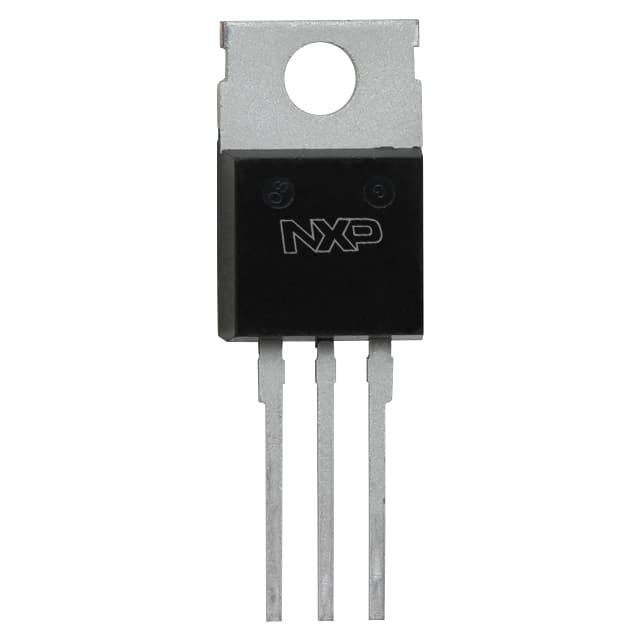Szczegóły produktu można znaleźć w specyfikacjach.

BUJ105A,127
Product Overview
Category: Semiconductor
Use: Amplifier
Characteristics: High voltage, low power consumption
Package: SOT-223
Essence: NPN epitaxial silicon transistor
Packaging/Quantity: Tape and reel, 2500 units per reel
Specifications
- Voltage - Collector Emitter Breakdown (Max): 160V
- Current - Collector (Ic) (Max): 4A
- Power - Max: 2.5W
- DC Current Gain (hFE) (Min) @ Ic, Vce: 40 @ 1A, 4V
- Transition Frequency: 30MHz
- Operating Temperature: -55°C ~ 150°C
Detailed Pin Configuration
- Base
- Collector
- Emitter
Functional Features
- High voltage capability
- Low collector-emitter saturation voltage
- Complementary NPN type available (BUJ104A,127)
Advantages and Disadvantages
Advantages:
- High voltage capability allows for versatile applications
- Low power consumption
- Complementary NPN type available for specific circuit requirements
Disadvantages:
- Limited maximum current compared to some alternatives
- Moderate transition frequency
Working Principles
The BUJ105A,127 is designed as an NPN epitaxial silicon transistor with high voltage capabilities. It operates based on the principles of amplification and control of electrical signals.
Detailed Application Field Plans
The BUJ105A,127 is suitable for various applications including: - Audio amplifiers - Power management circuits - Voltage regulators - Motor control systems
Detailed and Complete Alternative Models
- BUJ104A,127 (Complementary NPN type)
- MJE13005 (Higher current capability)
- TIP31C (Higher current capability)
This comprehensive semiconductor device offers high voltage capabilities and low power consumption, making it suitable for a range of amplifier applications.
Word count: 280
Wymień 10 typowych pytań i odpowiedzi związanych z zastosowaniem BUJ105A,127 w rozwiązaniach technicznych
What is BUJ105A,127?
- BUJ105A,127 is a common NPN bipolar junction transistor (BJT) used in various technical solutions.
What are the typical applications of BUJ105A,127?
- BUJ105A,127 is commonly used in amplification circuits, switching circuits, and voltage regulation applications.
What are the key electrical characteristics of BUJ105A,127?
- The key electrical characteristics include a maximum collector current of 4A, a maximum collector-emitter voltage of 60V, and a maximum power dissipation of 2W.
How do I properly bias BUJ105A,127 in an amplifier circuit?
- Proper biasing involves setting the base-emitter voltage to ensure the transistor operates within its linear region for amplification.
Can BUJ105A,127 be used in high-frequency applications?
- While it can be used in moderate frequency applications, BUJ105A,127 may not be suitable for very high-frequency applications due to its transition frequency limitations.
What are the recommended heat dissipation considerations for BUJ105A,127?
- It's important to consider proper heat sinking and thermal management to ensure the transistor operates within its specified temperature limits.
How does BUJ105A,127 compare to other transistors in similar applications?
- Compared to other transistors, BUJ105A,127 offers a balance of current handling capability, voltage ratings, and gain characteristics suitable for many general-purpose applications.
Are there any common failure modes associated with BUJ105A,127?
- Common failure modes include thermal runaway due to inadequate heat dissipation and exceeding maximum ratings leading to breakdown.
What are the recommended operating conditions for BUJ105A,127?
- Operating within the specified temperature range, current, and voltage limits as outlined in the datasheet is crucial for reliable performance.
Can BUJ105A,127 be used in automotive or industrial control applications?
- Yes, BUJ105A,127 can be used in automotive and industrial control applications where its electrical characteristics meet the requirements of the specific application.

